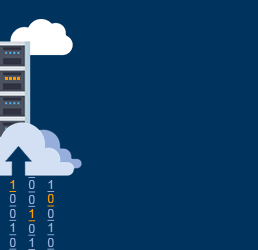New on LowEndTalk? Please Register and read our Community Rules.
All new Registrations are manually reviewed and approved, so a short delay after registration may occur before your account becomes active.
All new Registrations are manually reviewed and approved, so a short delay after registration may occur before your account becomes active.
















Comments
As I'm sure you should be. Lay off the crack.
The Linux images on the Oracle instances have iptables enabled, and you'll have to modify them in order to open ports. This is in addition to opening ingress through the Networking section of the web interface.
I tried UFW multiple times, but it didn't work.
For iptables, I used this video.
https://youtu.be/JHTuEPU7uFkDo I have the opportunity to change the location from Amsterdam TO Frankfurt if we're talking about the free tier? If someone has a Frankfurt LG, please let me know
Once your home region is selected it cannot be changed.
Can someone tell me how to install Debian or Ubuntu?
Cant figure out how to reinstall with a different image
They have no reinstall function, the only way is to delete and recreate the instance, risking to get "Out of host capacity" and not be able to create a new one.
You can try the Debian/Ubuntu/CentOS conversion script posted before:
https://www.lowendtalk.com/discussion/comment/3026824/#Comment_3026824
I did not try myself (just considering to), but people say it works.
https://github.com/bohanyang/debi
Run this script with --force-efi-extra-removable option to reinstall to minimal Debian 10. Powered by 100% pure official Debian installer (the same thing as in the ISO but booted with GRUB)
Thanks, I'll give it a try!
https://www.lowendtalk.com/discussion/comment/3179912/#Comment_3179912
https://www.lowendtalk.com/discussion/comment/3180398/#Comment_3180398
comparing these two, the first is Oracle Linux based, the 2nd, Ubuntu Linux based.
I don't know why, but mine the same situation, ie., after applying their OS templates and rebooting the machine, Oracle Linux based system consumes 8G swap, but Ubuntu based system/VM zero. From HetrixTools monitoring agent stats, it seems Oracle based system consumes more resources, and maybe that's the reason they pre-set a huge swap?
IPv6 seems to be disabled/ not supported?
I recreate my vm-s 8-10 times, never had any problem.
That is correct.
https://docs.cloud.oracle.com/en-us/iaas/Content/Network/Concepts/ipv6.htm
"IPv6 addressing is currently supported only in the US Government Cloud."
Supposedly their panel supports IPv6 already, but for some reason they don't enable it for everyone yet.
Good for you, I feel like some locations are more likely to run into the stock problem, such as Japan where mine are.
Tried using my debit card, got card error... I guess only credit cards works.
Nope my debit card worked fine, same for others here. It just hates your card, double check that its a physical debit card and that you got the details exactly right. If it doesn't work obviously there isnt anything I can do but I can personally assure you that genuine physical debit cards do work.
i use oracle public cloud for a ha hashicorp vault solution.. thats the instances a lb in front and using there object storage for vaults storage. i also use there kms to perform vault auto unseal. i would be glad to share how if anyone is intrested
Maybe Oracle Cloud is just rebadged ColoCrossing?
How do you generate Access Key and Secret Key for the bucket?
Colocrossing doesn't have any Epycs, AFAIK.
That said, Larry Ellison probably can't do that much worse.
you dont you just give the user that runs the vault daemon access to a configured oci-cli install
Anyone knows if it's possible to reinstall the vps with another SO without terminate and create a new instance?
I used a script linked above:
to reinstall Ubuntu into Debian, it worked very well. I suppose you can use it to reinstall Debian into Debian again, as well.
No luck with this ... grub entry was ok, reboot and nothing.
Tried the Console Connection, connected but I can't understand what to do with it
Don't they have a regular console for dummies ?
?
Would be great to boot with netboot.xyz
@nfn I'm the developer of bohanyang/debi script.
Are you using Oracle's Ubuntu template?
Are you seeing Debian's installer booted?
Did you use
--force-efi-extra-removableoption?What does "reboot and nothing" mean?
I believe it works but if it really don't, provide more info and maybe I can take a look
Yes, was the Oracle's Ubuntu Normal template, not minimal
No, where should I see this? Just saw text there was saying boot entry was added successfully
No
After seeing the successful message I reboot and the instance never came up.
I have now terminated the ubuntu instance create a new one with centos.
Now I have another with Oracle Linux 7 and I would like to Install Debian 10.
Edit: Does Oracle Console Connection works the same way as we see on "regular" providers (VNC)?
Thanks
@Chocoweb this is what I see with Oracle Linux 7.9 Volume (--force-efi-extra-removable):
In the previous instance I reboot but it never came up.
What I should do from here?
@nfn
Please try again with
--force-efi-extra-removableoption added. You have to use this on Oracle Cloud.@Chocoweb I've done that, please see my previous post.
What should I do from here? Reboot?
Thanks
You can also use
--network-consoleto enable SSH console, if you can't figure out how to use the Console Connection (VNC).Then reboot with
rebootcommand orshutdown -r nowcommand.How to use network console:
After reboot, wait for about 3 minutes and try to
sshto the VM with userinstallerand the password you specified. If connected, you can press Ctrl+A then 4 to switch to the log output. Don't press enter (to start a new installer) in console 1How to use Oracle's VNC on Windows 10:
1. Create a "Console Connection" with your SSH public key
2. Click the 3 dots and choose "Copy VNC for Linux/Mac" (This is not wrong)
3. Change
ProxyCommand='ssh ...toProxyCommand='C:\Windows\System32\OpenSSH\ssh.exeand run4. Download TigerVNC viewer
vncviewer64-1.11.0.exefrom https://bintray.com/tigervnc/stable/tigervnc/1.11.05. Connect to 127.0.0.1:5900